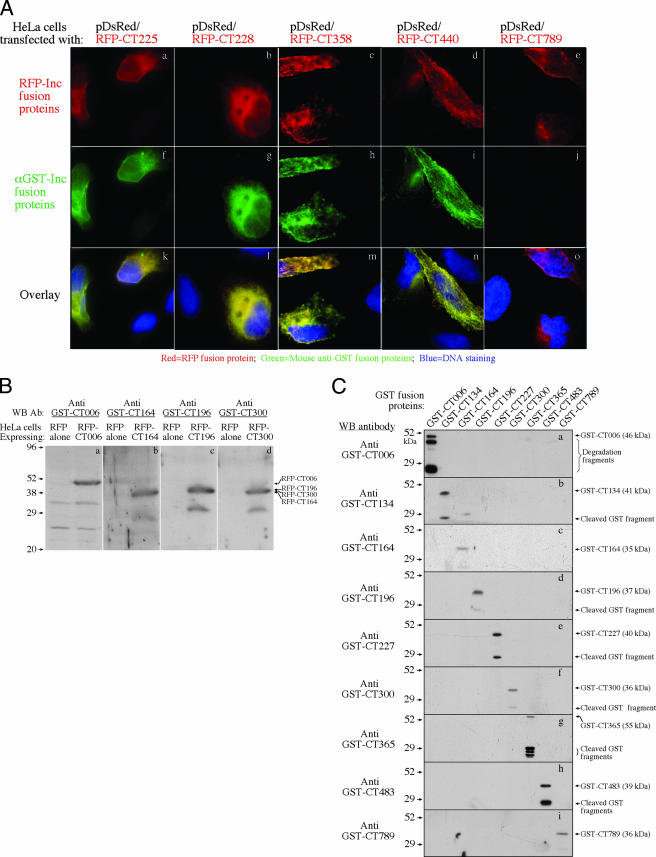FIG. 1.
Specificity of antibodies raised with GST chla myd i al fusion proteins. A total of 50 anti-GST fusion protein antibodies were reacted with RFP fusion proteins in immunofluorescence assay (A) or Western blot (WB) assay (B) and with GST fusion proteins in Western blot assay (C). Panel A shows examples of the reactivity of five anti-GST fusion protein antibodies (green; f to j) with HeLa cells expressing corresponding RFP fusion proteins (red; a to e). The DNA was labeled with a Hoechst dye (blue). Anti-GST-CT225, anti-GST-CT228, anti-GST-CT358, and anti-GST-CT440, together with 37 other antibodies (data not shown; see list in Table 1), reacted positively with the corresponding RFP fusion protein-expressing cells (k to n), but anti-GST-CT789, along with 8 other antibodies (images not shown; see list in Table 1), failed to do so (o). Overall, a total of 41 anti-GST fusion protein antibodies reacted positively with their corresponding RFP fusion proteins, and the remaining 9 did not. Panel B shows the binding of four anti-GST fusion protein antibodies to the corresponding RFP fusion protein bands (right lane of each panel), but not RFP-only bands (left lanes). The remaining five antibodies (anti-GST-CT134, anti-GST-CT227, anti-GST-CT365 anti-GST-CT483, and anti-GST-CT789) were also tested, but no specific bands were detected (data not shown). Panel C shows the reactivity of the nine antibodies with the corresponding GST fusion proteins, but not heterologous GST fusion proteins, under the experimental condition used. These anti-GST fusion protein antibodies were diluted highly enough to minimize the cross-reactivity. All 50 antibodies specifically reacted with their corresponding immunogens (GST fusion proteins) in the Western blot assay (images not shown). Ab, antibody; α, anti.

